A Celebration Filled With Joy and Forgiveness
Hari Raya means celebration day and marks the end of Ramadan. It’s a significant event for Muslims in Malaysia. Both Muslims and sometimes non-Muslims seize this opportunity to return to their kampung to celebrate with family.

During Raya, men often wear traditional outfits such as baju Melayu, songkok, and sampin, while women dress in baju kurung or kebaya. Families usually wear matching colours to symbolise their unity.
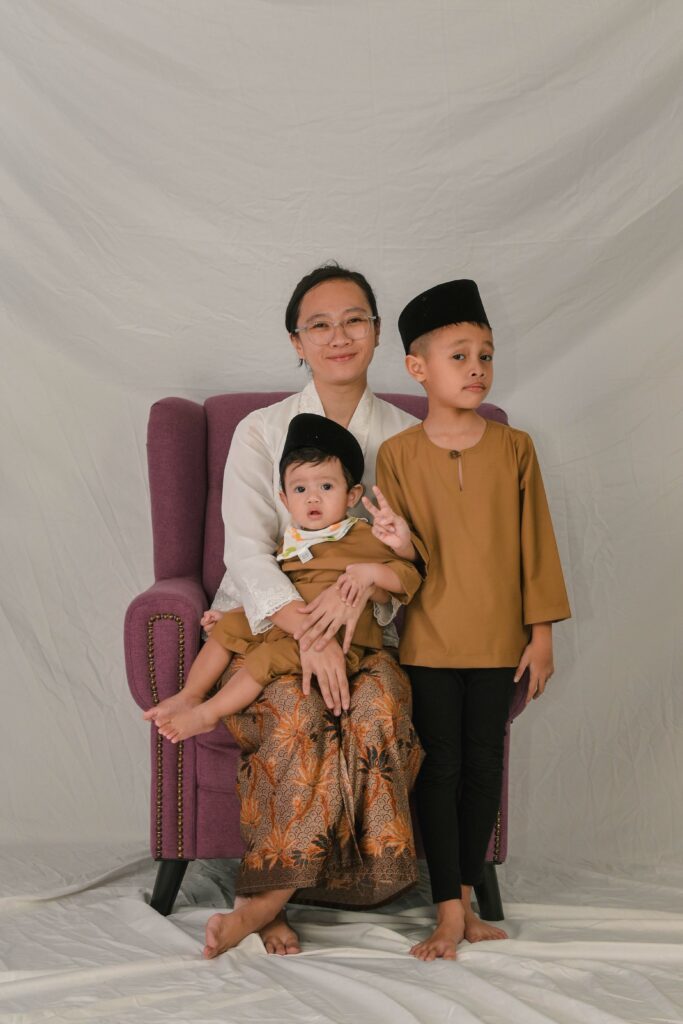
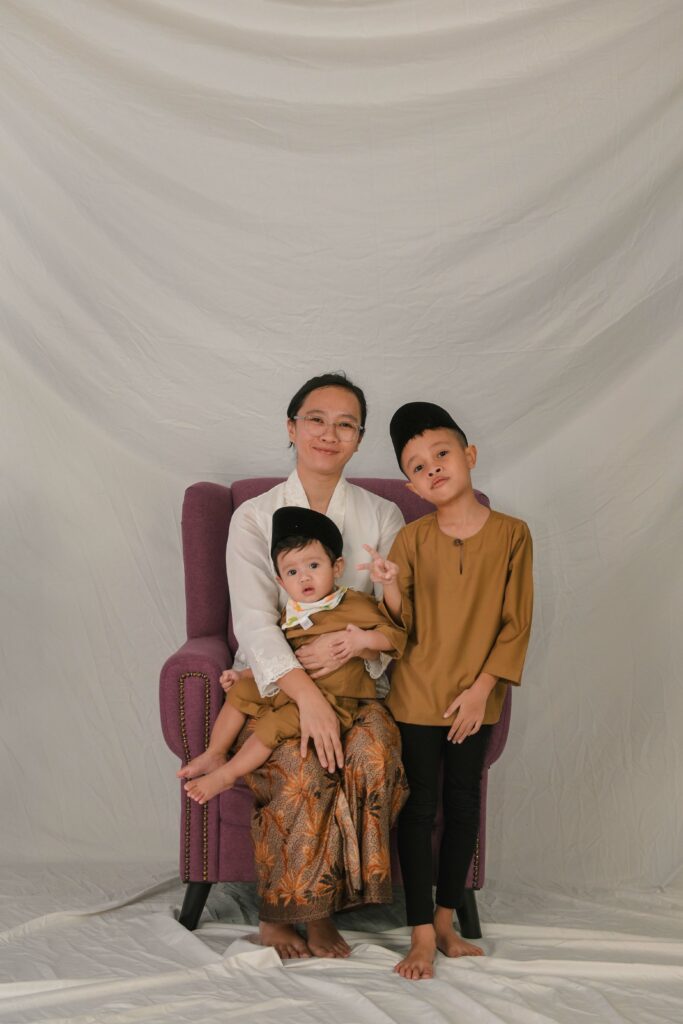
I’m writing this article on the ninth day of Raya, which is 19th April 2024, to be exact. We’re back in Kuala Lumpur now, and of course, we miss kampung and all those moments of Raya. We went back to Perak a day before Raya. Fortunately, the traffic was smooth.

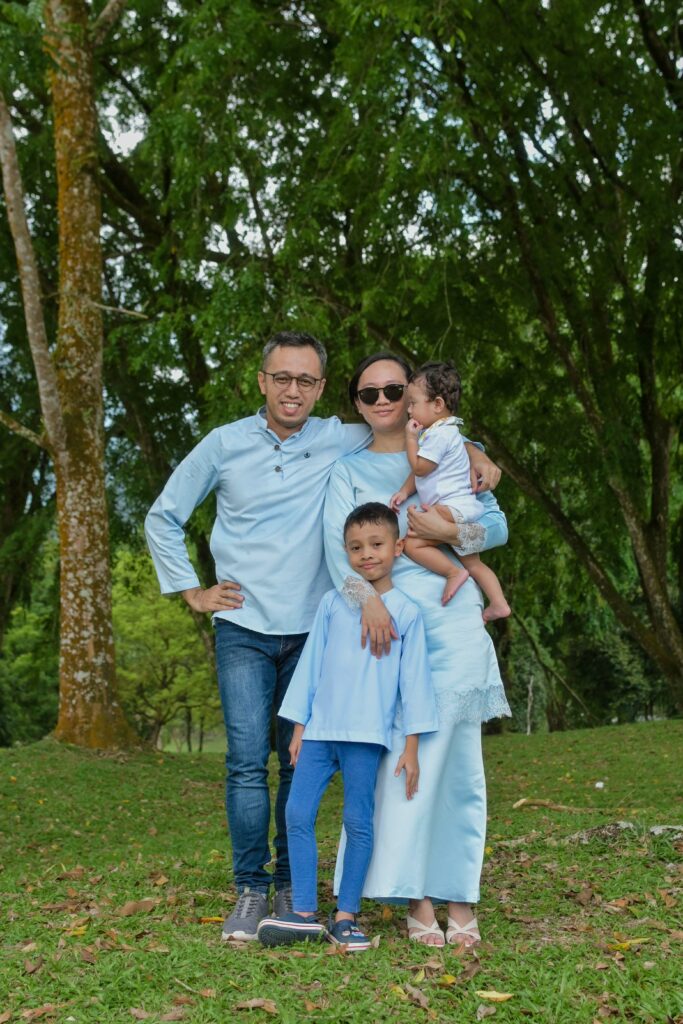
Luck wasn’t on our side when we returned to Kuala Lumpur four days later. What was supposed to be a 2-hour and 30-minute trip turned into a grueling 9-hour drive due to heavy traffic.
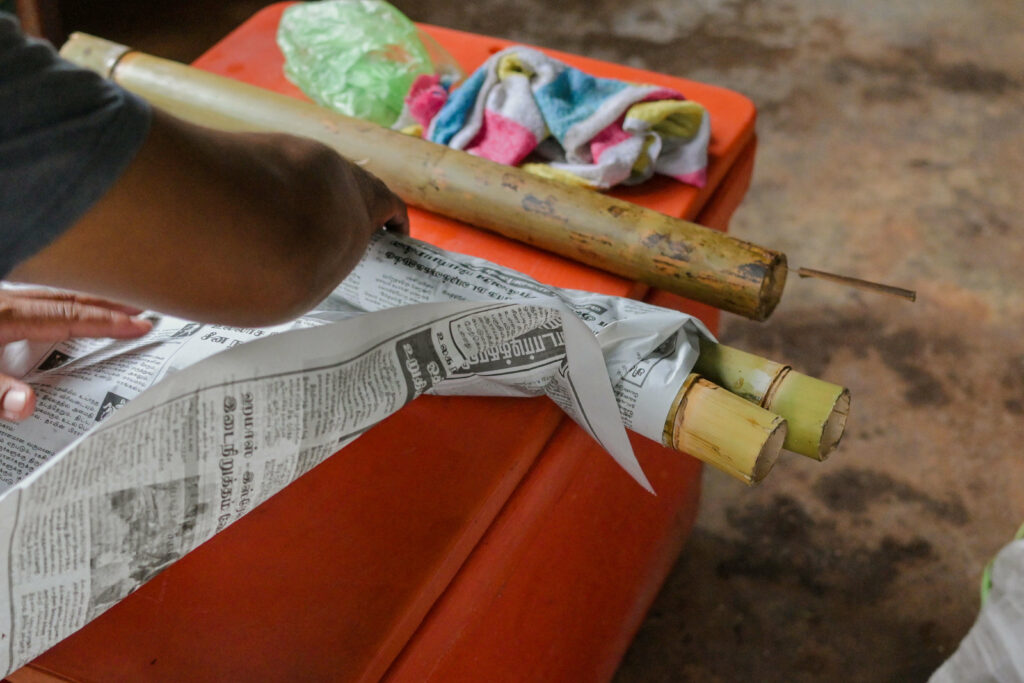
Nonetheless, it was all worth it. We had a meaningful Raya celebration with the family. I still find myself experiencing post-Raya withdrawal.
The Origins of Lemang
Why lemang? For many, including myself, lemang is synonymous with Raya, and Raya without lemang (and rendang) just wouldn’t be the same.

This Raya, I was fortunate enough to take some photos of someone cooking lemang. Coincidentally, a friend of mine in the kampung cooks and sells lemang, so I took the opportunity to visit him and took these photos. I went back home with two of them in the car, and they were delicious.

Lemang, a traditional dish of the Minang people, traces its origins back to the teachings of Sheikh Burhanuddin, an Islamic scholar. Despite the prevailing Islamic teachings in Minangkabau, Sheikh Burhanuddin observed that locals were still using the same cooking tools for both halal and haram foods, such as pork curry and fried snakes.
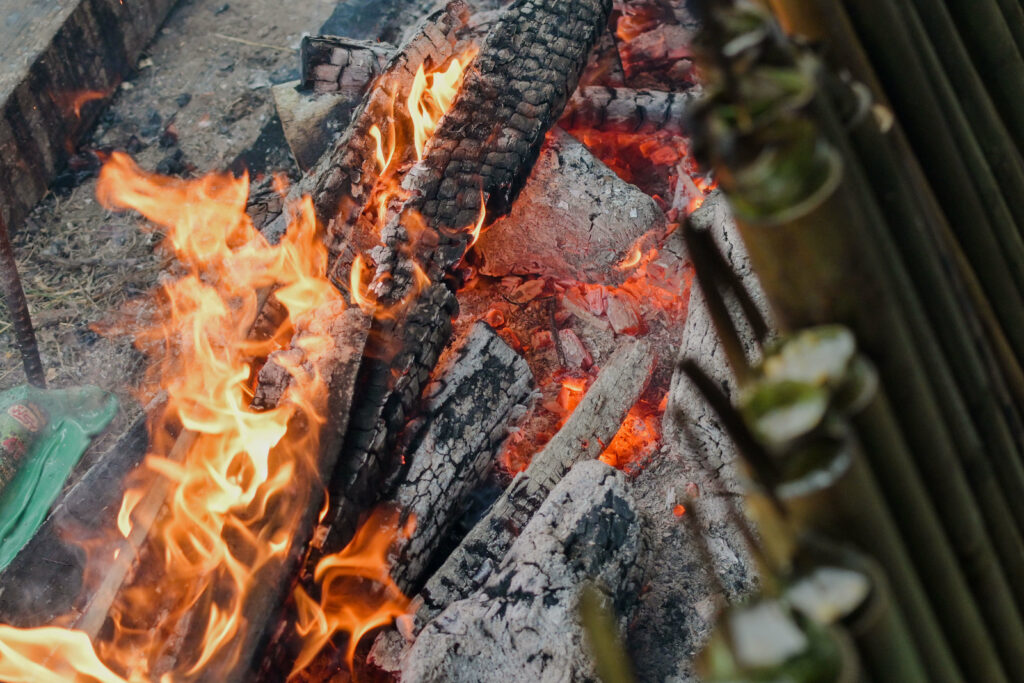
To address this, he introduced lemang as a solution—cooking rice in bamboo segments lined with banana leaves, ensuring separation from previously used utensils. This innovative cooking method spread as people imitated Sheikh Burhanuddin’s technique, evolving into a beloved tradition known as malamang.
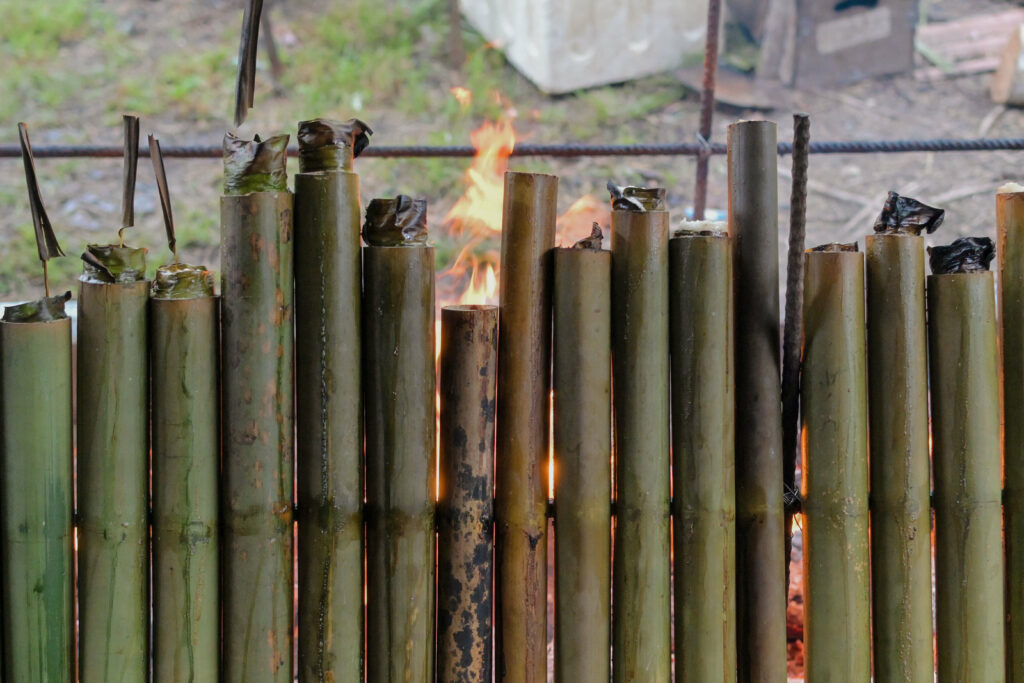
Cultural experts highlight how Sheikh Burhanuddin’s teachings became deeply ingrained in Minang culture, spreading the lemang-making traditions far beyond Minangkabau.
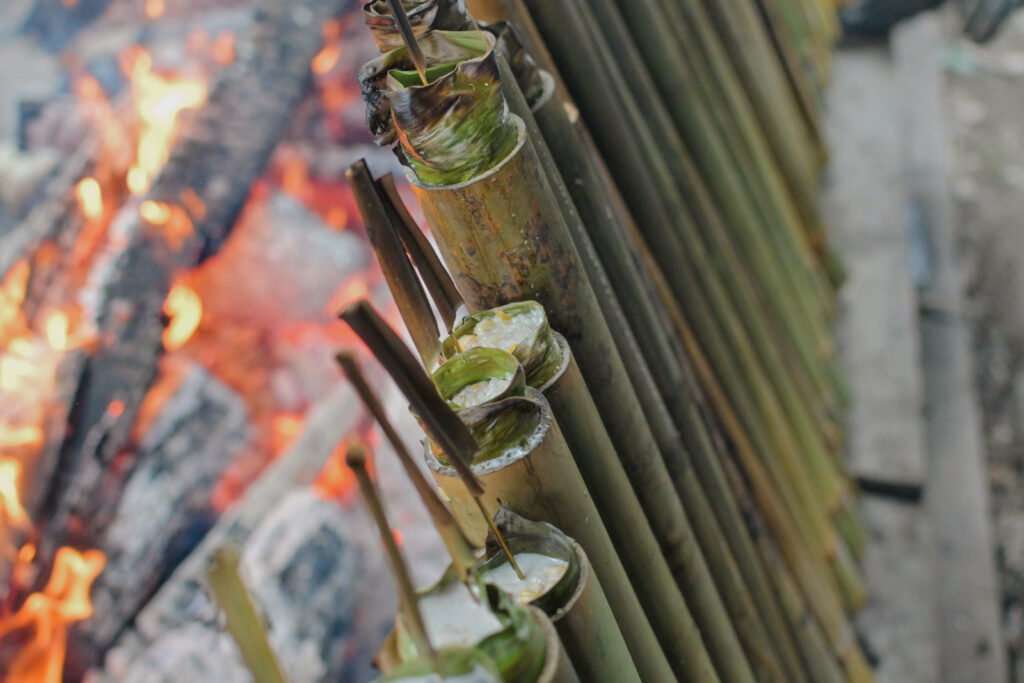
This cultural practice travelled across Indonesia and abroad, driven by the adventurous nature and trading traditions of the Minangkabau people. Today, lemang symbolises the blend of Islamic heritage and local customs, treasured not just for its taste but also for its cultural significance.
Cooking Lemang
Making lemang involves using bamboo stalks and an open fire. First, wash and rinse the glutinous rice, the main ingredient. Grate coconuts to obtain coconut milk—you’ll need about three to four coconuts for 1 kg of rice. Mix the rice and coconut milk in a bamboo stalk lined with banana leaves, filling it about three-quarters of the way.
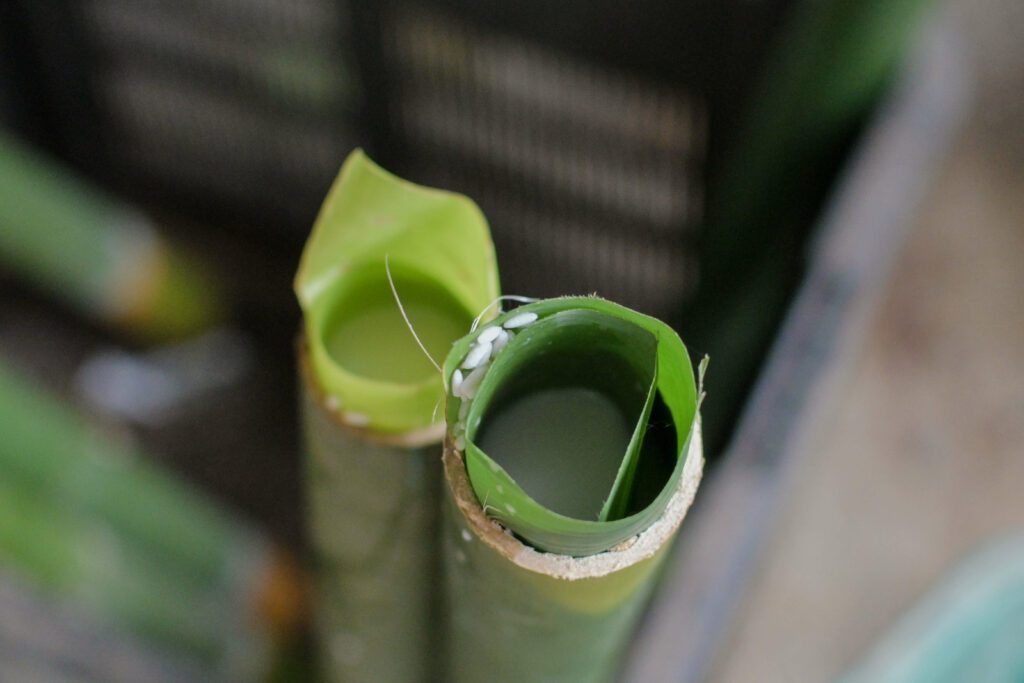
Add salt for flavour. Seal the bamboo with a banana leaf and tie it. Cook the lemang over a high flame for about 3 hours, rotating them occasionally for even cooking. Once the bamboo turns golden yellow and the bubbling subsides, reduce the heat and let it rest for a while. To serve, split the bamboo open, slice the lemang, and enjoy!
References:
Chanthao, R. (2020). Bamboo rice: food cultural heritage in southeast asia. Intl J Educ Soc Sci Res, 3(6), 111-115.
Yovani, T. (2019). Lamang tapai: the ancient Malay food in Minangkabau tradition. Journal of Ethnic Foods, 6(1), 22.
Ismail, N., Ab. Karim, M. S., Che Ishak, F. A., Arsyad, M. M., Karnjamapratum, S., & Sirison, J. (2021). The Malay’s traditional sweet, dodol: a review of the Malaysia’s heritage delicacy alongside with the rendition of neighbouring countries. Journal of Ethnic Foods, 8, 1-13.
Raji, M. N. A., Ab Karim, S., Ishak, F. A. C., & Arshad, M. M. (2017). Past and present practices of the Malay food heritage and culture in Malaysia. Journal of Ethnic Foods, 4(4), 221-231.
Wahyudi, B. A., Octavia, F. A., Hadipraja, M., Isnaeniah, S., & Viriani, V. (2017). Lemang (Rice bamboo) as a representative of typical Malay food in Indonesia. Journal of Ethnic Foods, 4(1), 3-7.
